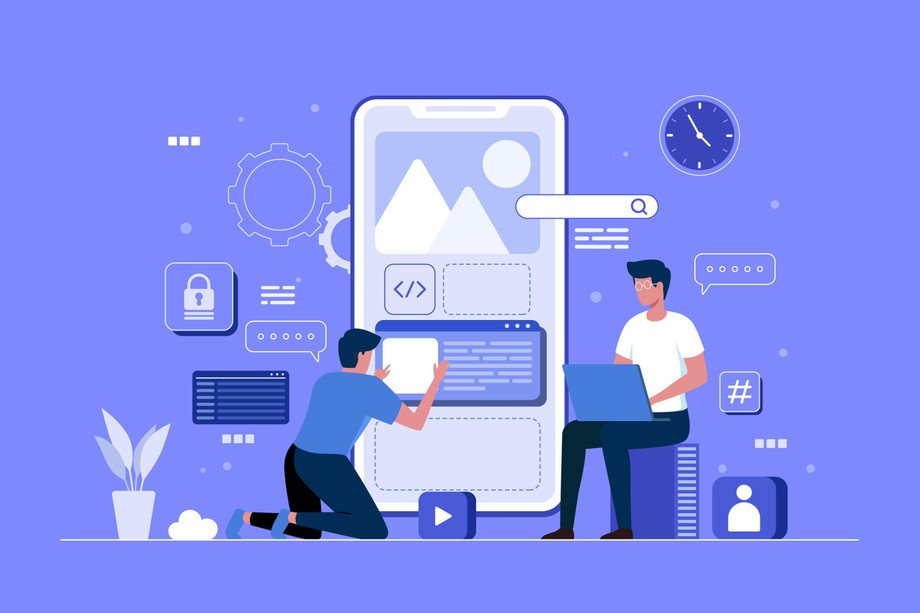In the rapidly evolving world of mobile technology, iOS app development stands as a prominent force. Apple's iOS platform has a massive user base and a reputation for offering a seamless, secure, and engaging user experience. For businesses and developers looking to create high-quality, intuitive applications, understanding iOS app development is paramount.
This guide provides an in-depth overview of iOS app development, covering essential aspects, tools, and best practices to help you embark on your journey in crafting successful iOS applications.
Understanding iOS App Development
Introduction to iOS Platform
Apple's iOS is a mobile operating system exclusively designed for Apple's hardware, including iPhones, iPads, and iPod Touch devices. iOS app development focuses on creating applications specifically tailored for these devices, utilizing Swift or Objective-C programming languages.
Benefits of Developing for iOS
High-Quality User Experience: Apple devices are known for their sleek design and exceptional user experience. iOS apps typically adhere to strict design guidelines, resulting in a cohesive and intuitive interface.
Loyal User Base: Apple users tend to be more engaged and loyal, often willing to pay for quality applications and in-app purchases.
Security and Privacy: iOS is praised for its robust security features and privacy controls, enhancing user trust and app credibility.
Profitability: The Apple App Store provides a platform where developers can monetize their apps through paid downloads, in-app purchases, and subscriptions.
iOS Development Technologies
Swift: Swift is Apple's powerful and intuitive programming language, designed to be safe, fast, and expressive. It has gained immense popularity among iOS developers due to its modern syntax and developer-friendly features.
Objective-C: Objective-C is a long-standing programming language used for iOS development. Although Swift is now the primary language, understanding Objective-C is valuable for maintaining and updating legacy apps.
Xcode: Xcode is the official integrated development environment (IDE) for iOS app development. It provides tools for coding, testing, and debugging iOS apps, making it an indispensable tool for iOS developers.
Interface Builder: Interface Builder is a part of Xcode that allows developers to create user interfaces visually, simplifying the design process.
Steps in iOS App Development
Project Planning and Research
Define Your App Idea: Clearly outline your app's purpose, target audience, and unique selling proposition. Understand what problem your app aims to solve.
Market Research: Analyze the market to identify similar apps, their features, and user feedback. This helps in refining your app idea and positioning it effectively.
Create a Wireframe: Develop a basic blueprint of your app's layout and features. This wireframe will serve as a guide during the development phase.
Designing the User Interface (UI/UX)
Create Visual Assets: Design icons, graphics, and other visual elements that align with your app's branding and user interface design.
Design User Flow: Plan and design the user journey within the app, ensuring an intuitive and seamless experience.
Prototyping: Use tools like Sketch, Adobe XD, or Figma to create interactive prototypes of your app, allowing you to visualize the user experience.
Coding and Development
Set Up Xcode Project: Create a new Xcode project and set up the necessary configurations based on your app's requirements.
Write Code Using Swift/Objective-C: Begin writing the code for your app's functionality, following best coding practices and using the chosen programming language.
Integrate APIs: Incorporate any required APIs to fetch data or perform specific functionalities within your app.
Testing and Debugging
Unit Testing: Conduct unit tests to validate the functionality of individual components of your app.
Integration Testing: Test the integration of various components to ensure they work together seamlessly.
User Acceptance Testing (UAT): Gather feedback from a select group of users to identify any usability issues and gather insights for improvements.
Bug Fixing: Address bugs, errors, and issues identified during testing to enhance the app's stability and performance.
Deployment and Distribution
App Store Submission: Prepare your app for submission to the Apple App Store by creating an app listing, providing necessary information, and following Apple's guidelines.
App Store Review: Apple's review team will assess your app for compliance with guidelines, quality, and functionality before approving it for the App Store.
Post-Release Maintenance and Updates
Gather User Feedback: Collect feedback from users and monitor app reviews to understand user satisfaction and identify areas for improvement.
Release Updates: Regularly release updates to address bugs, introduce new features, and enhance the overall app experience.
Best Practices for Successful iOS App Development
Follow Apple's Design Guidelines
Adhere to Apple's Human Interface Guidelines to ensure your app aligns with the iOS design language, creating a cohesive and intuitive user experience.
Optimize for Performance and Battery Life
Write efficient code and optimize app performance to ensure a smooth user experience and minimal impact on device battery life.
Prioritize Security and Privacy
Implement robust security measures to protect user data and privacy, aligning with Apple's emphasis on security.
Keep the User in Mind
Prioritize user needs and preferences throughout the development process, focusing on delivering value and a delightful user experience.
Test Extensively
Thoroughly test your app on various iOS devices and versions to ensure compatibility and a consistent experience for all users.
Stay Updated with iOS Changes
Regularly update your knowledge and skills to adapt to new iOS versions, features, and technologies, keeping your app current and competitive.
Conclusion
iOS app development is a dynamic and rewarding endeavor, offering vast opportunities to create innovative and engaging applications for Apple's vast user base. By understanding the iOS platform, leveraging the right tools, following best practices, and staying updated with the latest trends, you can craft exceptional iOS app Development that resonate with users and succeed in the competitive app market.
Remember, the key to success lies not just in the technical aspects but in understanding your audience, designing with empathy, and delivering a seamless, enjoyable app experience. Happy coding and best of luck on your iOS app development journey!

